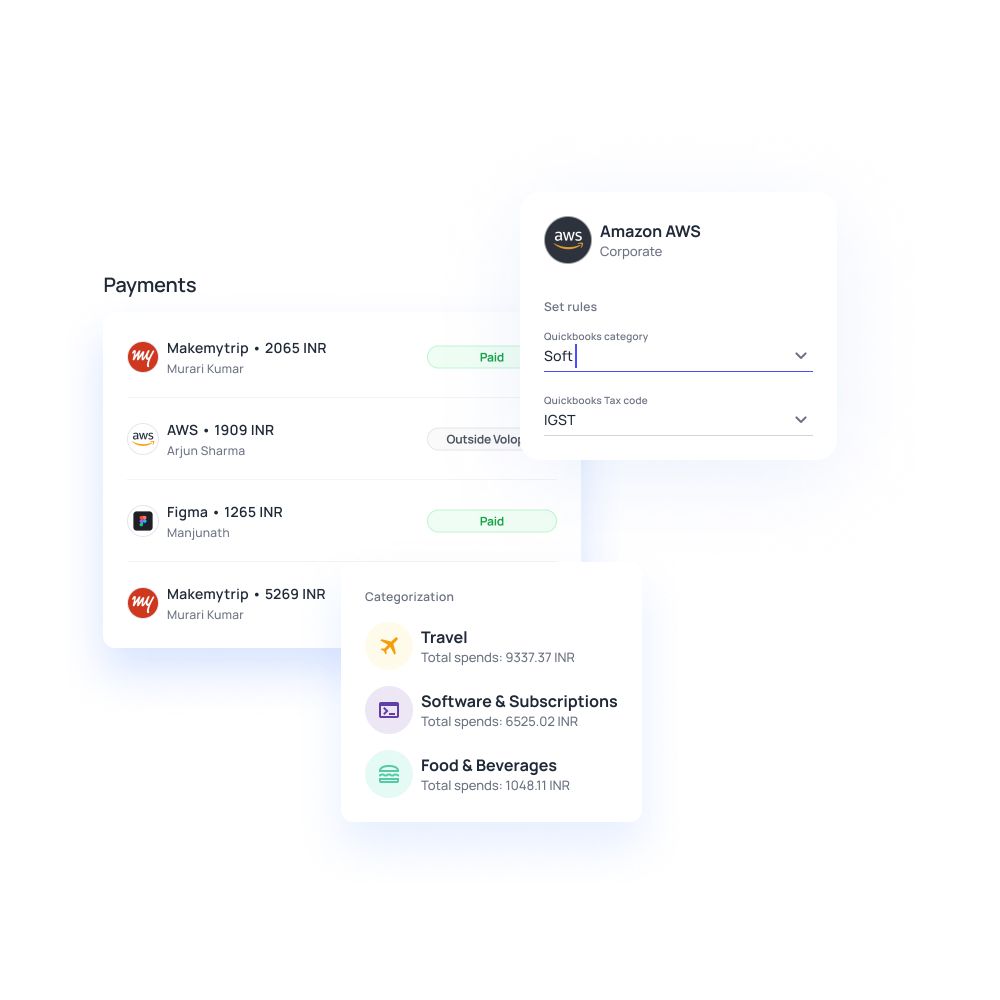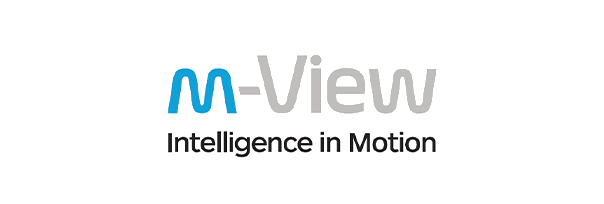👋 Exciting news! UPI payments are now available in India! Sign up now →
What are prepaid expenses? Importance, examples, and best practices
If you’ve ever paid for rent, insurance, or subscriptions in advance, you’ve already encountered prepaid expenses. These are payments you make ahead of time for goods or services that will be used in the future. Understanding what are prepaid expenses is essential for maintaining accurate financial records and budgeting effectively.
By accounting for them properly, you can avoid unexpected cash flow issues and ensure your books reflect your actual financial position. For added control and visibility, tools like prepaid cards are also becoming popular they simplify how you manage and track prepaid expenses in real time.
What are prepaid expenses?
Prepaid expenses are payments you make in advance for goods or services that your business will use over time. According to accrual accounting principles, these upfront costs are initially recorded as assets on your balance sheet because they provide a future economic benefit. As the benefit is consumed—say, a month's rent or a portion of an annual insurance policy—the expense is gradually recognized in your profit and loss statement.
Understanding what are prepaid expenses helps you allocate costs accurately across accounting periods, giving you a clearer picture of your financial health.
For example, if you pay for a 12-month software subscription in January, only one-twelfth of that cost should be expensed each month. Using prepaid cards can simplify this process.
These cards let you make controlled prepayments for recurring expenses like subscriptions, rent, or vendor services while maintaining clear records for accounting and budgeting purposes.

Why are prepaid expenses important for businesses?
Properly managing prepaid expenses is more than just an accounting requirement it’s a strategic move that can enhance your business’s financial clarity and operational efficiency. By understanding what are prepaid expenses and tracking them accurately, you ensure your financial reports reflect true performance.
This helps you make smarter decisions, forecast better, and even optimize cash flow. Especially for prepaid expenses for small businesses, handling these payments proactively can lead to long-term savings and improved vendor relationships. From complying with accounting standards to unlocking tax benefits, the advantages are clear.
1. Accurate financial reporting
One of the most important reasons to manage prepaid expenses is to maintain accurate financial reporting. Under generally accepted accounting principles (GAAP), expenses must be recognized in the period they benefit. This means if you pay an annual insurance premium upfront, the cost should be spread across all twelve months rather than recorded entirely in the month of payment.
This approach aligns with accrual accounting standards and ensures that your income statement shows a true picture of your business’s profitability. Understanding what are prepaid expenses helps you stay compliant and avoid over- or underreporting your expenses.
2. Cash flow planning
Prepaid expenses also play a key role in cash flow management. Since these are payments made ahead of time, tracking them allows you to predict and prepare for upcoming cash requirements. This is particularly beneficial for small businesses where every rupee counts. By knowing when significant prepaid expenses like rent or software licenses are due, you can allocate your funds more efficiently.
This foresight improves liquidity and helps prevent cash shortages, especially during low-revenue periods. Tools like prepaid cards can make this even easier by scheduling and controlling outgoing payments in advance.
3. Tax deduction strategy
When you know what are prepaid expenses and how they work, you can also use them to your tax advantage. Certain prepaid expenses for small businesses, like insurance premiums or maintenance contracts, may be deductible for tax purposes.
However, deductions must be timed accurately to comply with tax regulations. By strategically managing prepaid costs, you can ensure that deductions are applied in the appropriate tax year, helping reduce your taxable income. This requires diligent tracking and proper documentation something that expense management platforms or prepaid cards can streamline for you.
4. Budget forecasting
Prepaid expenses provide valuable data for long-term budget forecasting. When you track these advance payments accurately, you gain insights into your recurring operational costs. This makes it easier to project future spending and allocate resources effectively.
For instance, if you know your business pre-pays for an annual CRM subscription every January, you can account for that in your upcoming budget. Understanding what are prepaid expenses helps you identify fixed commitments and build a more stable financial plan for your business.
5. Vendor discounts
Prepaying for goods or services can sometimes give you access to exclusive discounts or better terms with your vendors. Many suppliers offer favorable pricing in exchange for upfront payments, which can lead to significant savings over time.
Using prepaid cards for these transactions not only simplifies the payment process but also gives you greater control and visibility over spending. For prepaid expenses for small businesses, this strategy can be a smart way to reduce costs while building stronger vendor relationships.
Common examples of prepaid expenses
To better understand what are prepaid expenses, it helps to look at everyday business scenarios where these costs appear. Prepaid expenses are common in nearly every industry and often relate to recurring or contractual obligations. They also form a significant part of your business expenses making it critical to track and record them properly.
Prepaid rent
Office or warehouse leases often require advance payments whether monthly, quarterly, or annually. When you prepay rent, it counts as a prepaid expense and is recorded as an asset until the rental period progresses.
Paying annual rent with a prepaid card can simplify budgeting. It helps prevent overspending, ensures payments are always on time, and provides a clear accounting record. This approach is especially useful for small businesses looking to better control operational costs.
Prepaid insurance
Many insurers provide discounts if premiums are paid annually instead of monthly. In such cases, the upfront payment becomes a prepaid expense and is gradually recognized over the policy term.
Using a prepaid card for insurance gives you control over both the amount and timing of the payment. By setting card limits, you can avoid overcharges and ensure funds are used only for premiums. This method is particularly helpful for small businesses managing prepaid expenses with limited working capital.
Prepaid subscriptions
Businesses often depend on subscription-based tools such as CRMs, accounting platforms, or marketing software. Choosing annual billing not only reduces costs but also qualifies these payments as prepaid expenses.
Paying subscriptions via prepaid cards helps prevent surprise charges or renewals. It also keeps software expenses separate from other costs, simplifying bookkeeping. For small businesses, understanding prepaid expenses in subscriptions ensures smarter planning for investments.
Prepaid utilities
In certain cases, utility providers may require deposits or advance payments for services like electricity or internet, especially when signing new commercial contracts. These advance payments are treated as prepaid expenses until they’re used. By prepaying utilities, you make your cost structure more predictable ideal for monthly budgeting.
Paying via prepaid cards allows for better visibility and avoids the risk of exceeding set utility budgets. This method is particularly beneficial when managing prepaid expenses for small businesses that aim to keep operational overheads in check.
Prepaid advertising
Advertising campaigns often require upfront payments whether for print, online, or influencer marketing. These costs are recorded as prepaid expenses until the ads run or impressions are delivered. Using prepaid cards to fund your campaigns lets you control ad spend precisely and reduce the risk of going over budget.
It’s also a practical way to allocate set budgets to different platforms (e.g., Google Ads, Facebook, LinkedIn, or other tools). For small businesses, this ensures every rupee is carefully tracked and accounted for as part of their prepaid expenses.
Simplify your prepaid expense tracking—start with Volopay today!
How to account for prepaid expenses
Once you understand what are prepaid expenses, the next step is learning how to record and track them properly in your books. Whether you’re using traditional payment methods or modern prepaid cards, prepaid expenses must be handled carefully to ensure compliance and financial accuracy.
The goal is to recognize these payments as assets first, and only expense them gradually as the benefit is used. This process is particularly important for prepaid expenses for small businesses, where precise tracking can make or break budgeting efforts. Here’s how to properly account for prepaid expenses:
1. Record as an asset
When you make a payment in advance say, for insurance, rent, or software it's not considered an immediate expense. Instead, you should record it as a current asset under prepaid expenses on your balance sheet. This is because the value of the payment hasn’t been fully “used” yet.
For example, if you use a prepaid card to pay for a year’s worth of business insurance, the full amount goes into the prepaid expense account initially. This setup keeps your profit and loss statement accurate and reflects that the payment is meant to benefit multiple future periods.
2. Amortize over time
Once recorded as an asset, the prepaid expense must be amortized meaning, you expense it gradually over the period it provides value. For instance, if you prepay ₹1,20,000 for a 12-month software subscription, you’ll expense ₹10,000 each month.
This matching principle is core to accrual accounting and ensures that your financials show a true picture of when and how money is spent. Whether you paid using a bank transfer or a prepaid card, the concept remains the same: expense the cost as the benefit is consumed, not when the money leaves your account.
3. Journal entries
To properly reflect prepaid expenses in your books, you’ll need to make two types of journal entries. At the time of payment, debit the Prepaid Expenses account and credit Cash or the relevant prepaid card account. For example:
● Debit: Prepaid Insurance ₹1,20,000
● Credit: Prepaid Card Account ₹1,20,000
Each month, as the expense is recognized, make a second entry:
● Debit: Insurance Expense ₹10,000
● Credit: Prepaid Insurance ₹10,000
This process helps you track how the asset gets “used up” and ensures your income statement reflects actual usage.
4. GAAP compliance
To comply with Generally Accepted Accounting Principles (GAAP), especially under the accrual basis, you must recognize expenses in the period they are incurred—not when the cash is paid. That’s why prepaid expenses are first recorded as assets, then amortized. Failing to follow this practice could distort your income statement, overstating expenses in one period and understating them in others.
By understanding what are prepaid expenses and recording them correctly even when using prepaid cards you align your accounting with GAAP standards and present a fair financial picture to stakeholders and auditors.
5. Software integration
Modern accounting software like QuickBooks, Xero, or NetSuite makes managing prepaid expenses much easier, especially when you’re using prepaid cards. These platforms can automatically sync transactions, classify prepaid expenses, and schedule amortization entries over time.
For example, if your business uses a prepaid card for annual subscriptions, integrated software can tag that payment, schedule monthly expense entries, and provide alerts for upcoming amortizations. This automation is a game-changer for prepaid expenses for small businesses looking to reduce manual errors and improve reporting accuracy.
Prepaid expenses vs. other expense types
Understanding what are prepaid expenses becomes even clearer when you compare them to other types of business expenses. Each category accrued, deferred, and regular expenses differs in how and when it’s recorded.
These distinctions matter for accurate accounting, especially if you're using prepaid cards to streamline payments. Let’s explore how prepaid expenses stack up against other common expense types, and why prepaid cards offer a modern advantage in managing them:
Prepaid vs accrued expenses
The difference between prepaid and accrued expenses lies in their timing. Prepaid expenses are payments made in advance for goods or services your business will consume later. In contrast, accrued expenses are costs that have been incurred but not yet paid like utilities used in March but billed in April.
While prepaid expenses reduce your cash immediately and increase assets, accrued expenses increase liabilities until they’re settled. Prepaid cards are especially useful for making early payments, ensuring you stay ahead on expenses and don’t accumulate liabilities. For small businesses, this proactive approach can significantly reduce end-of-month accounting pressure.
Prepaid vs deferred expenses
Although the terms sound similar, prepaid expenses and deferred expenses differ in timing and duration. Prepaid expenses typically cover short-term needs (under 12 months), like monthly rent or annual subscriptions. Deferred expenses, on the other hand, are long-term costs that are recognized over several accounting periods, such as multi-year marketing campaigns or leasehold improvements.
Both are recorded as assets initially, but prepaid expenses are consumed faster. By using prepaid cards for short-term commitments, you can ensure accurate short-term tracking and avoid mixing them up with long-term deferrals.
Prepaid vs regular expenses
Prepaid expenses differ from regular expenses, which are incurred and recognized immediately. A regular expense might be a utility bill paid after usage, while a prepaid expense is a subscription paid a year in advance. The key difference is timing: prepaid is future-focused, while regular expenses reflect current or past activity.
Prepaying with prepaid cards helps segregate these costs and reduces the risk of lumping long-term costs into one reporting period. This is especially useful when managing recurring prepaid expenses for small businesses that require consistent monthly planning.
Financial statement impact
From a financial reporting perspective, prepaid expenses affect the assets section of your balance sheet. Over time, as the service or benefit is consumed, the value shifts from assets to expenses on the income statement. Other expenses like accrued liabilities or regular expenses directly impact the liabilities or equity side.
Understanding this helps you allocate costs properly and avoid overstating liabilities or understating profits. Using prepaid cards adds clarity to how prepaid assets flow through your books, keeping your reports clean and compliant.
Card-based prepayments
One of the most efficient ways to handle prepaid expenses is through prepaid cards. Compared to cash or manual checks, these cards offer automation, spend limits, and real-time tracking. You can assign specific cards for rent, software, or insurance making it easier to trace and categorize each payment.
For prepaid expenses for small businesses, this method offers better visibility and eliminates the guesswork involved in tracking advance payments. Plus, many prepaid card systems integrate directly with accounting platforms, reducing manual errors and ensuring timely amortization of costs.
Benefits of managing prepaid expenses effectively
Now that you understand what are prepaid expenses, it's time to look at the real-world advantages of managing them well. Whether you're running a startup or scaling operations, effective prepaid expense management improves financial visibility, simplifies compliance, and frees up time for strategic work.
Using prepaid cards adds a layer of control and automation to the process especially important for prepaid expenses for small businesses where resources are often stretched. Here’s how strong prepaid expense management can benefit your business:
Enhanced financial accuracy
When you manage prepaid expenses correctly, you align costs with the periods in which the related goods or services are used. This ensures your financial reports accurately reflect your business’s performance. By allocating prepaid expenses month-by-month instead of in one lump sum, you avoid inflating costs in a single reporting period.
This approach improves the reliability of your income statements and makes year-on-year comparisons easier. Prepaid cards help reinforce this accuracy by tagging transactions, simplifying the classification of each prepayment, and supporting timely amortization.
Budget control
Using prepaid cards for managing prepaid expenses offers a proactive way to enforce budget limits. Instead of overcommitting funds or making unplanned advance payments, you can set spending caps for specific categories like rent, subscriptions, or insurance.
For prepaid expenses for small businesses, this level of control prevents overspending and ensures that working capital is reserved for critical operations. With prepaid cards, you can even issue category-specific cards to different teams or departments, limiting the risk of misuse while keeping track of prepayments effortlessly.
Tax optimization
Understanding what are prepaid expenses also opens the door to strategic tax planning. By prepaying deductible business costs before the end of the financial year, you can reduce taxable income and unlock legitimate tax savings. However, these deductions must be recorded in the right accounting periods.
Prepaid card transactions are easy to track and reconcile, helping you maintain proper documentation for audits and ensure that deductions comply with tax regulations. Timely recognition of prepaid expenses can lead to better cash flow and smarter year-end tax positioning.
Operational efficiency
Manual tracking of prepaid expenses can be time-consuming and error-prone. With prepaid cards, you can automate much of this process right from issuing payments to syncing transactions with your accounting software.
You can also schedule recurring payments for regular prepaid items like SaaS tools or marketing services, reducing administrative overhead. For small businesses, automation is not just a convenience it’s a necessity. Prepaid cards make prepaid expense management more efficient, freeing your team to focus on core business operations.
Supplier savings
Many vendors offer discounts or preferential terms when you pay in advance. Managing prepaid expenses through prepaid cards enables you to act quickly on these offers, without waiting for approval workflows that can delay payments. This strategy can lead to direct cost savings and stronger supplier relationships.
For prepaid expenses for small businesses, these benefits are significant you reduce costs while maintaining uninterrupted service delivery. Plus, with card-based limits, you ensure that only approved prepayments go through, adding a layer of financial security.
Make prepaid expense management simple, transparent, and stress-free
Challenges of managing prepaid expenses
One of the biggest challenges in managing prepaid expenses is tracking how they should be amortized over time. It’s easy to miss monthly allocations, especially when handling multiple prepayments.
This can be solved with card-linked accounting software that automatically schedules amortization based on dates and categories. For example, when you pay a 12-month service via a prepaid card, tools like QuickBooks or NetSuite can create recurring entries, keeping records accurate with minimal manual input.
Prepaying for goods or services requires upfront cash outflows, which can strain liquidity if not planned well. This is a common issue for small businesses with limited cash reserves.
Prepaid cards help manage this by enforcing strict spending limits. You can allocate specific amounts to cards (e.g. rent, utilities, or subscriptions) to prevent overspending. This approach makes it easier to spread out prepayments strategically without putting unnecessary pressure on business cash flow.
Without consistent tracking, prepaid expenses can be misclassified or double-counted, leading to inaccurate financial reports. Manual entries of prepayments and amortizations also increase the risk of typos or missed records.
Prepaid cards reduce this risk by generating detailed transaction logs that seamlessly sync with accounting software. Since every transaction is time-stamped, categorized, and securely stored, errors are minimized and records remain accurate, reliable, transparent, and always audit-ready.
Incorrect handling of prepaid expenses can result in non-compliance with accounting standards like GAAP or tax authority rules (e.g., the IRS for U.S.-based businesses). Recognizing expenses too early or too late can trigger red flags in financial audits.
With prepaid card transactions, compliance is easier to maintain. Every payment is traceable, timestamped, and documented, making it simple to align expense recognition with the appropriate accounting periods. This helps you stay compliant and avoid penalties or re-statements.
Sometimes, businesses face complications due to vague or unclear contract terms with vendors especially when prepaying large amounts. If a vendor doesn't deliver as promised, reclaiming prepaid funds can be difficult.
Many providers offer dispute resolution support and the ability to pause or limit payments. Before initiating card-based prepayments, ensure your vendor agreements clearly outline deliverables, timelines, and refund terms. This protects your business and makes prepaid expenses more secure.
Best practices for managing prepaid expenses
Effectively handling prepaid expenses requires more than just making advance payments it’s about tracking, recording, and optimizing them to support business goals. Whether you’re a startup or scaling enterprise, using prepaid cards along with smart strategies can help improve accuracy, control, and compliance. Here are some essential best practices to manage your prepaid expenses more efficiently:
Leverage accounting software
One of the easiest ways to manage prepaid expenses is by integrating your prepaid cards with cloud-based accounting software like Xero or QuickBooks. These platforms automatically import and categorize transactions, reducing manual effort and minimizing errors.
When a prepaid card is used for an annual SaaS subscription, for instance, the transaction can be tagged as a prepaid expense and set up for amortization in the software. This ensures timely expense recognition and eliminates the need to track these allocations manually. For small businesses, this level of automation frees up your finance team to focus on higher-value tasks.
Set amortization schedules
Once you record a prepaid expense, set up a clear amortization schedule to spread the cost over the benefit period. If you prepay ₹1,20,000 for 12 months of rent using a prepaid card, you should recognize ₹10,000 as rent expense each month. Modern accounting tools let you automate this process based on transaction metadata from prepaid card platforms.
This not only ensures that expenses align with accrual accounting rules, but also keeps your books consistent and GAAP-compliant. It’s a crucial step in maintaining clean financial statements, especially if you’re preparing for audits or investor reporting.
Monitor cash flow
Even though prepaid expenses offer long-term benefits, they can create short-term cash flow strain if not budgeted properly. To manage this, align your prepaid card funding (reloads or limits) with your liquidity forecasts. This ensures that you're not overloading your expenses early in the quarter and leaving little working capital for unforeseen costs.
You can also set prepayment approval workflows or tiered card limits to control timing and size of outflows. For prepaid expenses for small businesses, this is an excellent way to avoid liquidity crunches without compromising on cost-saving opportunities.
Review vendor terms
Before making large card-based prepayments, always review the vendor’s contract terms. Look for clauses related to cancellation, refunds, or penalties. Many vendors offer early-payment discounts or added services when you prepay these should be clearly documented. By ensuring clarity in agreements, you protect your business from potential service lapses or disputes.
Using prepaid cards makes it easier to take advantage of these vendor offers, as you can quickly release funds without waiting for lengthy bank transfer approvals. Be proactive about negotiating favorable terms, especially for recurring expenses like software, rent, or insurance.
Conduct audits
Routine audits of your prepaid expenses help you maintain financial accuracy and uncover issues like duplicate payments or unused services. Prepaid cards simplify this process by offering downloadable transaction logs that can be reconciled against amortization schedules.
Audits should verify that expenses are being correctly amortized, that vendors have delivered on prepaid services, and that any expired or refunded prepayments are properly recorded. Regular internal audits also help you stay compliant with GAAP or tax authority guidelines, making your business more resilient and audit-ready.
How prepaid cards enhance prepaid expense management
Effectively managing prepaid expenses is crucial for maintaining financial accuracy and operational efficiency. Leveraging prepaid cards can significantly streamline this process, offering enhanced control, real-time tracking, and improved security. Here's how prepaid cards can optimize your prepaid expense management:
Budget control
Prepaid cards empower you to set specific spending limits, ensuring that prepayments align with your budgetary constraints. By allocating fixed amounts to each card, you prevent overspending and maintain financial discipline. Certain platforms allow you to customize individual spending limits and monitor transactions in real-time, providing granular control over your expenses.
Real-time tracking
With prepaid cards, you gain immediate visibility into your transactions. There are many different tools available in the market offering real-time dashboards that display spending patterns, enabling you to monitor expenses as they occur. This instant access to financial data allows for prompt adjustments and more informed decision-making.
Security features
Prepaid cards come equipped with robust security measures to protect against unauthorized transactions. Features like PIN protection, transaction alerts, and the ability to lock or unlock cards instantly enhance security. Additionally, Visa's multi-layered fraud prevention systems provide an extra layer of protection for your transactions.
Simplified bookkeeping
Integrating prepaid card transactions with accounting software simplifies the bookkeeping process. Services like Volopay offer seamless integration with platforms such as Xero and QuickBooks, allowing for automatic syncing of transaction data. This integration reduces manual data entry, minimizes errors, and ensures accurate financial records.
Vendor payment flexibility
Prepaid cards offer flexibility in managing vendor payments. With solutions like Volopay, you can create vendor-specific cards, set spending limits, and make instant payments. This approach not only streamlines the payment process but also helps in maintaining strong supplier relationships by ensuring timely and controlled payments.
Common use cases for prepaid expenses in businesses
Once you understand what are prepaid expenses, it's easier to see how they’re applied in real business operations. From managing rent and insurance to streamlining campaign budgets, prepaid expenses play a crucial role in ensuring operational predictability.
Leveraging prepaid cards for these payments adds a layer of control and automation that’s especially useful for small businesses. Here are five common business scenarios where prepaid expenses and cards can be applied effectively:
1. Small business operations
Many small businesses choose to prepay for essentials like office rent or SaaS tools to secure better rates or lock in multi-month access. Paying rent annually via a prepaid card allows for easier budgeting and eliminates the risk of missing monthly due dates.
The card’s spending limit also acts as a safeguard against overpayment or unauthorized charges. For SaaS platforms like accounting or CRM tools, prepaid card use ensures auto-renewals are funded while keeping spending capped and monitored via real-time dashboards.
2. Corporate insurance
Insurance premiums are typically paid annually, making them a classic prepaid expense. Businesses can use prepaid cards to pay for property, liability, or health insurance in one upfront payment.
This not only simplifies the amortization process in your books but also ensures that your coverage isn’t disrupted by payment delays. Using cards also provides visibility over large lump-sum payments and lets you set reminders or automated triggers to manage renewals on time.
3. Marketing campaigns
Running digital marketing campaigns often requires strict budget adherence. By loading specific amounts onto prepaid cards for each campaign whether it’s for Google Ads, Meta, or LinkedIn you ensure that ad spend doesn’t exceed the allocated limit.
This is especially helpful for tracking prepaid advertising expenses, a category where overspending can spiral if left unchecked. Prepaid cards also make it easier to reconcile campaign spends with ROI and campaign duration.
4. Equipment leasing
Some businesses negotiate lease terms that allow for advance payments on equipment used in production, logistics, or tech operations. Prepaying via prepaid cards can help you manage these costs in a predictable manner.
For example, if you lease machinery for 6 or 12 months, paying with a prepaid card locks the cost in upfront while allowing finance teams to amortize the expense across the lease term. This provides budget stability and prevents payment lapses that might impact operations.
5. Employee benefits
Businesses also use prepaid expenses to offer training programs, upskilling courses, or employee wellness subscriptions. These costs are typically billed annually or semi-annually. By using prepaid cards, you can allocate specific budgets to each department or team for benefits and track usage efficiently.
This approach improves transparency, especially when managing benefits across multiple employees, and ensures that prepayments are authorized and within defined limits.
Prepaid expenses and financial statements
Understanding what prepaid expenses are isn’t just about knowing when and how you pay it's also about how those payments are reflected in your financial statements. When you use prepaid cards to handle these transactions, the impact on your financial reports remains the same, but the process becomes easier to track and reconcile. Here's how prepaid expenses influence various parts of your financial reporting:
Balance sheet effects
Prepaid expenses are initially recorded as current assets on the balance sheet because they represent future economic benefits. For example, if you prepay ₹1,20,000 for a year-long insurance policy using a prepaid card, the entire amount appears under "Prepaid Expenses" in your assets.
As each month passes and the insurance coverage is consumed, a portion of that asset is transferred to the income statement as an expense. Using prepaid cards helps ensure accurate and timestamped entries, making balance sheet management more precise.
Income statement impact
Once a prepaid expense starts delivering value such as monthly rent, subscriptions, or insurance it gets recognized on the income statement as an operating expense. This is typically done through monthly amortization.
So if you prepaid ₹60,000 for a six-month software license via a prepaid card, ₹10,000 would be expensed monthly. This approach aligns with accrual accounting principles and ensures that your expenses are matched with the revenues they help generate, giving a clearer view of your operational profitability.
Cash flow statement
On the cash flow statement, prepaid expenses regardless of whether they’re paid by bank transfer or prepaid card are reflected as cash outflows under operating activities. For instance, prepaying an annual vendor subscription using a prepaid card reduces your cash in hand for the current period.
Even though the full expense isn’t recognized on the income statement right away. Prepaid cards make it easier to track these transactions, especially when linked with real-time dashboards and categorized automatically.
Ratio analysis
Prepaid expenses influence liquidity ratios, such as the current ratio and quick ratio. Since they’re logged as current assets, an increase in prepaid expenses could inflate your current ratio. However, because these assets aren’t quickly convertible to cash, they don’t count toward the quick ratio.
When prepaid card payments are high, you’ll want to monitor how this affects your liquidity standing. For small businesses, managing these ratios accurately can affect loan approvals or investor confidence.
Investor perception
Investors and financial stakeholders often view prepaid expenses as a sign of proactive financial management, especially when handled through prepaid cards. It signals that your business plans ahead, locks in favorable vendor terms, and maintains strict spending discipline.
The use of card-based tracking, budgeting, and automation also reflects a mature and tech-savvy finance operation, which can positively influence investor sentiment. Just ensure that prepayments are clearly disclosed and amortized properly to maintain trust and transparency.
Manage prepaid expenses seamlessly with Volopay’s prepaid cards
Handling prepaid expenses doesn't have to be a manual, error-prone process. With Volopay’s prepaid cards, you gain a smart, scalable solution designed to simplify every aspect of prepaid expense management—whether you're paying annual rent, insurance premiums, SaaS subscriptions, or vendor payments. Here’s how Volopay gives you the control and visibility you need:
Budget control
With Volopay, you can issue prepaid business cards with pre-set spending limits, tailored to the purpose be it prepaying office rent, subscribing to SaaS tools, or paying annual insurance premiums. Each card can be assigned to a specific team, vendor, or employee, with strict upper limits to prevent budget overruns.
This gives you greater control over how funds are allocated and used. Finance managers can proactively fund only what’s needed nothing more ensuring no accidental overpayments or unauthorized transactions occur. It's ideal for small businesses that need to maintain a tight grip on cash flow while managing recurring prepayments.
Real-time tracking
Traditional accounting systems often reflect prepaid expenses only after reconciliations are completed. Volopay flips this on its head by offering real-time visibility into every prepaid card transaction. Whether you’ve just paid for a year of cloud storage or pre-booked a vendor service, it shows up immediately on a centralized dashboard.
Better yet, Volopay seamlessly syncs with popular accounting software like QuickBooks, Xero, and NetSuite, categorizing prepaid expenses automatically. This minimizes manual data entry, reduces errors, and ensures accurate amortization of your prepayments over time, making period-end close faster and less stressful.
Security
Prepaid expenses are often large-value payments made well in advance of service delivery—think ₹1,00,000 for annual insurance or multi-month software licenses. With so much at stake, security is non-negotiable. Volopay's expense management platform offers multi-layered security features, including:
● PIN protection and two-factor authentication.
● The ability to lock or disable cards instantly from your dashboard.
● Role-based approval workflows for issuing and approving payments.
These tools help safeguard your prepaid funds from misuse, fraud, or operational errors. You retain full control over how, when, and by whom each payment is made, keeping you compliant and protected.
Vendor flexibility
Another advantage of Volopay is its global reach and flexibility. The cards are accepted by vendors and platforms around the world. This is especially useful if your prepaid expenses include international services, like paying for AWS hosting, Adobe Creative Cloud, or a SaaS marketing tool priced in USD or EUR.
You can issue vendor-specific cards to streamline payments and prevent overlap, ensuring that each card serves a single purpose. This not only simplifies tracking but also strengthens vendor relationships through timely, consistent payments.
Compliance
Every prepaid transaction made through Volopay is automatically documented and categorized, helping you maintain accurate records for audits and regulatory compliance. With audit-ready reports, you can trace every rupee spent, link it to its associated vendor, and show how it’s being amortized across financial periods.
Whether you’re complying with GAAP, preparing for tax season, or managing internal audits, Volopay helps you tick all the boxes. You get detailed reporting that aligns with your general ledger, making compliance a streamlined, stress-free process.








Trusted by finance teams at startups to enterprises.
Bring Volopay to your business
Get started now
FAQs about prepaid expenses
Prepaid expenses are payments made in advance for goods or services that will be received in the future. Common examples include rent, insurance premiums, and software subscriptions. According to accrual accounting, these costs are initially recorded as assets on the balance sheet and only recognized as expenses over time as the services are used. This method helps ensure your financial reporting reflects the actual timing of benefits received.
Prepaid cards streamline the management of prepaid expenses by offering budget control, real-time tracking, and enhanced security. You can assign specific spending limits for categories like SaaS, insurance, or rent, preventing overspending. Transactions are automatically recorded and categorized, which helps with amortization and simplifies reconciliation. Prepaid cards are particularly useful for small businesses that need to monitor every expense closely without dealing with the complexity of traditional credit cards or manual reimbursements.
Prepaid expenses can be tax-deductible, but only when the benefit is actually realized. Under IRS and general accounting guidelines, you must recognize the expense gradually over the term of the service, not at the time of payment. For example, if you prepay ₹1,20,000 for a 12-month insurance policy, you’ll deduct ₹10,000 per month. Tracking this accurately with prepaid card transactions ensures your deductions align with the actual benefit period, keeping you compliant and optimizing your tax position.
Tracking prepaid expenses is essential for accurate budgeting, forecasting, and financial reporting. Without proper tracking, businesses risk misclassifying expenses, overstating profits, or missing out on legitimate tax deductions. Tools like prepaid cards help automate this process by logging transactions, categorizing them, and integrating with accounting software. This gives finance teams a real-time view of outstanding prepaid balances and how they’re being amortized crucial for maintaining financial clarity and operational efficiency.
While prepaid expenses can strain cash flow if not planned properly, the risks can be minimized with the right tools. Prepaid cards mitigate these risks by allowing you to allocate exact amounts for each prepayment, preventing accidental overspending. Additionally, features like card-level controls, approval workflows, and real-time visibility reduce the chance of fraud or duplicate payments. When managed well, prepaid expenses are a smart strategy for securing discounts, improving vendor relations, and ensuring smooth financial operations.